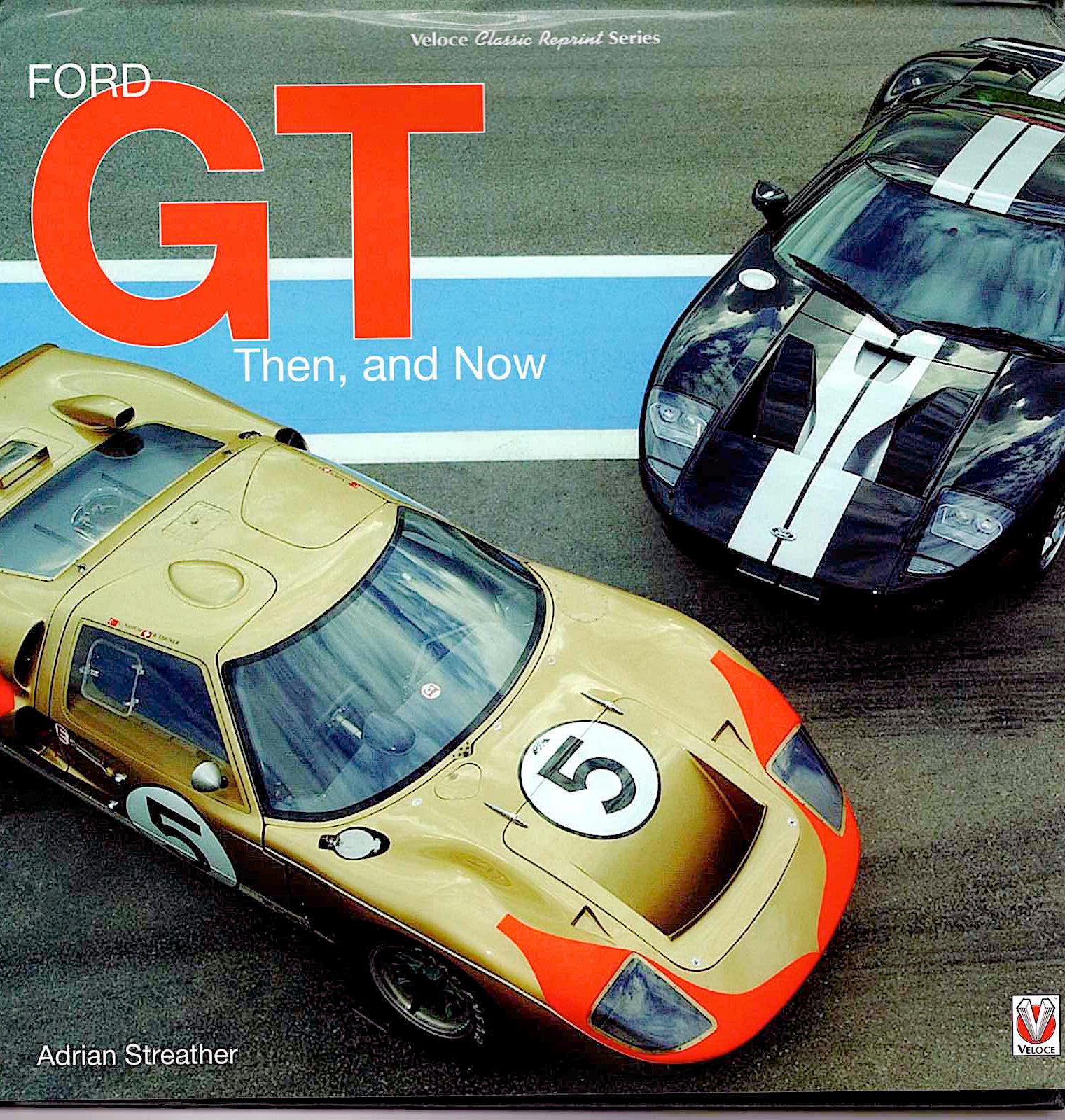Ford GT: Then and Now
Veloce Publishing’s mission is to “provide books of the highest quality in terms of content, accuracy, presentation, subject range and reader satisfaction to discerning automotive enthusiasts around the world.” Ford GT: Then and Now fulfills this mission with a book full of large, clear, high quality photos printed on nice, semi-gloss paper.
Ford GT: Then and Now is a photographic history of the Ford GT, starting with the Lola forerunners to the original Ford GT MK I race car in 1964, and continues with the Ford MK II, through the MK IV and J car. The book was first published in June 2006 and this edition is a reprint from June 2017. Unfortunately, the book does not cover the third generation Ford GT currently raced by the Ford racing team in the IMSA GT Le Mans series.
Chapters 1 through 3 describe the development of the Ford GT by the Ford racing program. Detailed information is provided with the specifications of the cars, history of the individual chassis numbers, driver interviews, and race events the cars participated in. Description of competitor’s cars and drivers are also included for comparison, including a description of Henry Ford II’s goal to beat the Ferraris at Le Mans. The history is very thorough and provides a vivid picture of the development of the first generation racing Ford GT’s.
Chapter 4 describes continued racing of the Ford GTs by privateers after Ford discontinued its racing program. The narrative follows GTs by chassis number in their later racing years.
Chapter 5 describes the second generation 2002 Ford GT. The new GT is described in early concept drawings, Ford development photos, assembly photos, specifications, and comparisons to the original 1964 GT. Many Ford Motor Company promotional photos are included. A description is provided of the Ford GT conversions for Europe with the homologation process for several European countries. This chapter also includes Ford GT sales information including production specifications, colors, costs and accessories.
The 2005 Ford GTX1 Roadster Show Car is described in chapter 6 with beautiful photographs, driver interviews, and impressions during several European road trips.
Chapter 7 lists several Ford GT inspired replicas and continuation models produced by other companies after production ceased on the first generation GT.
Chapter 8 describes the life of the Ford GTs since they officially ended racing in 1966. Included are many of the chassis numbers describing whether they have been restored, rebuilt, or unrestored in original condition. Several museum collections of Ford GTs are also described.
This book is in excellent history of the Ford GT, packed full of beautiful photographs, many full page, including detailed photos of the vehicle components. The history describes many of the GTs by chassis numbers and includes their racing history and driver impressions. Hopefully Veloce will update the history with the same kind of beautiful photos and detailed information on the current third generation Ford GT. This book is a great resource for fans of the Ford GTs, readers interested in racing history, and provides valuable details for modelers of Ford GT model kits.
Thanks to Adrian Streather for assembling this great compilation of photos and information on the Ford GTs, and to Veloce Publishing for providing the review sample to IPMS.











Comments
Add new comment
This site is protected by reCAPTCHA and the Google Privacy Policy and Terms of Service apply.
Similar Reviews